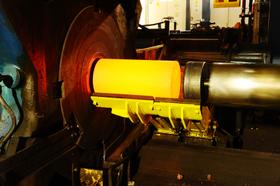The Rise of Technical and Vocational Training in 2025
In recent years the path of technical and vocational training has shifted from a lateral option to a strategic choice for many students, educators and families. What once was seen as an alternative to the four-year degree is now a leading route into high-demand careers. In 2025 the momentum behind technical and vocational training is stronger than ever. This article explores why that is, reviews the major developments, and offers guidance for parents, students and educators navigating this expanding field.
Why Technical and Vocational Training Matters Now
Technical and vocational training (often referred to as career and technical education, or CTE) addresses a key challenge in today’s economy: the need for workers equipped with skill sets aligned to industry demands. According to the National Center for Education Statistics (NCES), enrolment in CTE pathways at the secondary and postsecondary levels continues to rise.
In particular, enrolment at public two-year institutions with a high vocational-focus grew by 13.6 percent in fall 2024, marking two consecutive years of double-digit growth.
Meanwhile, a report by the Education Writers Association (EWA) noted that trade-school enrollment in the U.S. increased by 4.9 percent from 2020 to 2023.
Why this uptick? One reason is the increasing gap between traditional degree pathways and the labour market’s need for job-ready skills. As one policy analysis puts it, “training outside the established K-12 system and traditional four-year degrees” is becoming a focal point of U.S. workforce development.
For parents and students, these numbers signal that technical and vocational training is far from a fallback—it may instead be a smart, high-value choice.
Key Trends Driving the Technical & Vocational Training Surge
Several forces are converging to raise the profile of technical and vocational training in 2025.
1. Market and employment demand
Forecasts suggest that the global technical and vocational education market will expand at a compound annual growth rate (CAGR) of about 10 percent between 2025 and 2030, reaching over USD 1.4 trillion by 2030. Grand View Research In the U.S., training providers targeting vocational and trade programs are growing fast.
At the same time, industry-analyst commentary highlights that “all the trade-school indices are pointed upwards… search traffic, estimates from high-school counsellors, and overall sentiment all point to stable and strong growth in trade schools for the next several years.”
2. Policy and public investment
The U.S. administration noted in February 2025 that expanding access to high-quality career and technical education is a strategic national priority. Meanwhile, states and regional associations are passing resolutions to allocate more resources toward high-quality career pathways, work-based learning and formal alignment between education and industry.
3. Changing perceptions and student choice
Historically, vocational training was viewed as a second best option when compared to a bachelor’s degree. That stigma is fading. More students recognize that certificate programs, sub-baccalaureate credentials and accelerated training can lead to immediate employment, lower debt and high return on investment. A higher-education analysis notes that vocational schools are now “well above their enrollment levels in 2019”.
4. Cost and time-tocareer advantages
For many technical and vocational programs, the cost and time commitment are significantly less than a four-year college degree. For instance, the average annual tuition and fees at a public two-year institution in 2025 are about USD 3,598 (in-district) according to current data.
For parents and students seeking cost-effective, timely routes into employment, technical and vocational training offers a compelling alternative.
5. Industry‐aligned curricula and digital access
Modern technical and vocational training programs increasingly integrate industry certifications, online or hybrid delivery, and digital tools such as simulation, virtual reality (VR) and augmented reality (AR). Research shows that new delivery models are emerging to meet rapid technological change. RSIS International
This means a student pursuing a certificate in, for example, renewable-energy installation or advanced manufacturing may train using cutting-edge tools and be ready for a job in months.
Updated Landscape for 2025: Demographics, Costs and Student Outcomes
Enrolment and demographics
While traditional bachelor’s-degree enrolment was stagnant or declining for much of the last decade, technical and vocational enrolment is showing rebound and growth. For example, the NCES reported overall postsecondary enrollment rose 2.5 percent in fall 2023 compared to fall 2022, the first increase in more than a decade. The Student Clearinghouse reported that total postsecondary enrollment was up 3.2 percent in spring 2025 (+562,000) compared to spring 2024. nscresearchcenter.org
Within that, vocational-focused public 2-year institutions showed significant growth (see above).
Tuition and cost considerations
As noted, the average in-district tuition for public two-year institutions is around USD 3,600 per year.
Certification or diploma programs in technical/trade schools can be far lower, especially when financial aid, scholarships or employer-sponsored arrangements are applied.
Still, it is important for students and parents to investigate total cost: including books, supplies, tools, certification exam fees, transportation and living expenses.
Program outcomes
With the growing alignment of technical and vocational training to employer demand, students who complete well-designed programs are often positioned for employment in high-demand fields. For example, analysts highlight booming sectors for vocational training in 2025: information technology, healthcare (especially allied health technicians), construction and renewable energy.
Programs that integrate work-based learning or apprenticeships further enhance prospects. One vocational-education expert noted that many adults who already hold bachelor’s degrees are returning for career-specific training, indicating a recognition of the value of targeted credentials.
What Parents, Students and Educators Should Know
Given the dynamic state of technical and vocational training in 2025, here are several key points to consider.
Evaluate program alignment with industry demand
Not all vocational or technical programs are created equal. Look for programs that are aligned to recognized credentials, industry partnerships, and job placements. For an institutional review of private-school pathways, see our related article on Private School Review.
Check accreditation and credential value
Ensure the program is accredited and that the credential earned (certificate, diploma, licence) is valued by employers in the field. Many programs now include digital certifications or micro-credentials in addition to classroom hours.
Assess total cost and return on investment (ROI)
Consider tuition, fees, supplies, and living costs. Compare that cost to potential wages in the field. For example, a shorter certificate program costing under USD 5,000 may lead to an entry-level job paying USD 40,000 or more in certain tech or health-care technician roles.
Ask for alumni outcomes, job-placement rates, and average salaries.
Consider transfer and advancement pathways
Many vocational credentials serve as stepping-stones. For example, some students start with a certificate in welding or HVAC, enter the workforce, and later return for apprenticeship or associate degree options. Choosing a program with articulation agreements can keep future academic options open.
Explore hybrid/online and flexible delivery models
Especially for adult learners or those working while studying, flexible models matter. Digitally-enabled initiatives, VR simulations, and shorter boot-camp formats are increasingly common in 2025.
Engage family conversations early
For parents of high-school students: encourage exploration of technical and vocational pathways by visiting programs, speaking with industry instructors, and reviewing labour-market data for your region. Help your child understand that a bachelor’s degree is not the only valuable path—technical and vocational training offers a different route to meaningful employment.
Real-World Example: A Clean-Energy HVAC Program
Consider a hypothetical adult learner, Maria, age 29, seeking a career change. She enrolls in a green-HVAC certificate program at a technical institute. The program costs USD 4,500, includes 9 months of training, an industry certification in refrigeration technology and a 200-hour field practicum. Because the job market in her state projects a 45 percent increase in demand for HVAC and refrigeration techs by 2030, Maria’s risk is low. Within two months of completion she secures employment at USD 45,000 annually plus overtime.
This kind of scenario illustrates how technical and vocational training in 2025 can deliver tangible outcomes—faster, cheaper and more directly than a traditional four-year path.
What’s Ahead: The Growth Trajectory of Technical & Vocational Training
Looking forward, technical and vocational training is poised to become even more central to workforce development. Enrollment models suggest an annual growth rate of 6 percent or more through 2030 for trade and vocational programs. ewa.org
Policy frameworks emphasise alignment across education, industry and government—especially as technological change (AI, renewables, advanced manufacturing) accelerates. Workforce-readiness is now high on the agenda at the U.S. Department of Education (ED) and within state-level agencies.
For high-school-and-postsecondary systems, this means increasing these pathways, integrating hands-on credentialing earlier, and forging stronger employer linkages. Schools that adapt are more likely to serve students well, giving them routes into stable careers rather than debt-heavy pathways with uncertain outcomes.
Conclusion
In 2025 the case for technical and vocational training is stronger than ever. For many students and families, it offers a realistic, cost-effective, high-demand education pathway that leads directly into careers—with less time in school, lower debt and more immediate job prospects. Educators and policy-makers are increasingly embracing these pathways, and the market response confirms demand is rising.
If you are a parent exploring options with your child, a student weighing training or college choices, or an educator designing pathways, technical and vocational training deserves serious attention. The rise of this mode of education is not a trend—it’s a structural shift in how we prepare the workforce for the 21st-century economy.















